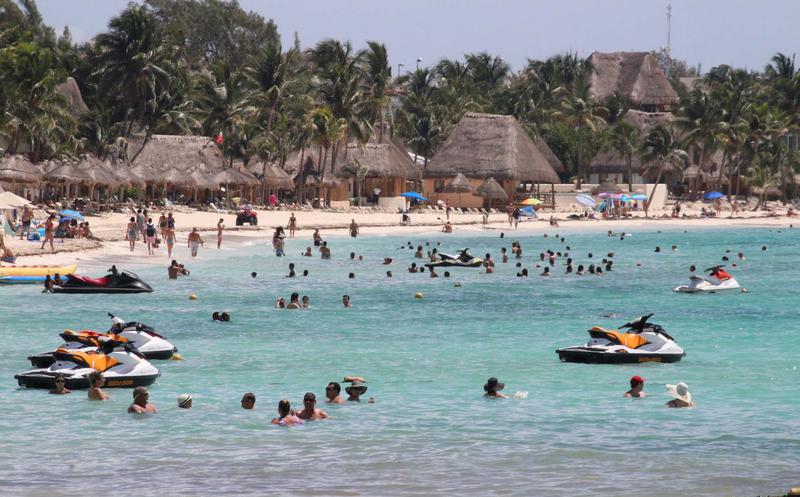Mexican government reveals list of Mexico’s dirtiest beaches

Beach-goers beware: according to the Federal Environment Secretariat (Semarnat), some beaches in the Pacific coast states of Guerrero, Nayarit and Michoacán are the dirtiest in all of Mexico.
The department has found that although all Mexican beaches are currently within acceptable pollution levels, there are a few that are on the brink of becoming unsuitable for recreational enjoyment.
Water quality testing revealed that Papagayo beach in Acapulco is the dirtiest in Mexico, at 198 fecal coliforms per 100 milliliters of water. Anything over 200 is considered unsafe for swimming.
Papagayo is the worst of the six Acapulco beaches that made Semarnat’s list of the dirtiest 10.
Ranked second with 191 fecal coliforms is Nuevo Vallarta II beach in Bahía de Banderas, Nayarit, followed by Acapulco’s Icacos beach, 189, and Copacabana beach, 183.
The only Michoacán beach to make the list is Chuquiapan in the municipality of Lázaro Cárdenas, scoring 173.
Two more Nayarit beaches followed: Bucerías in Banderas Bay and Chacala in Compostela, with test results of 165 and 163 respectively.
The list closes with three more Acapulco beaches: Hornos, Caletilla and Carabali, all testing between 152 and 158.
Environmental authorities warn that high fecal coliform levels can cause stomach flu, salmonella, cholera, ear inflammation, pink eye and other skin and respiratory conditions.
Beach-goers should be aware of cold-like symptoms, fever, diarrhea and digestive upset.
In order to determine which beaches are suitable for swimming, vacationers are urged to heed warnings issued by local authorities and to avoid entering water located near drainpipes, river mouths and lagoons.
Close attention should also be paid to weather conditions before and during a day at the beach: swimmers are advised to wait up to one day before going into the water after heavy rains. In the case of smaller, enclosed bays and coastal lagoons, the preventive waiting period is three days.
Beach-goers are also advised to be aware of water conditions before going in: the water should not be dirty, smelly or murky, and foam should not have unusual colors.
TYT Newsroom with information from Animal Político